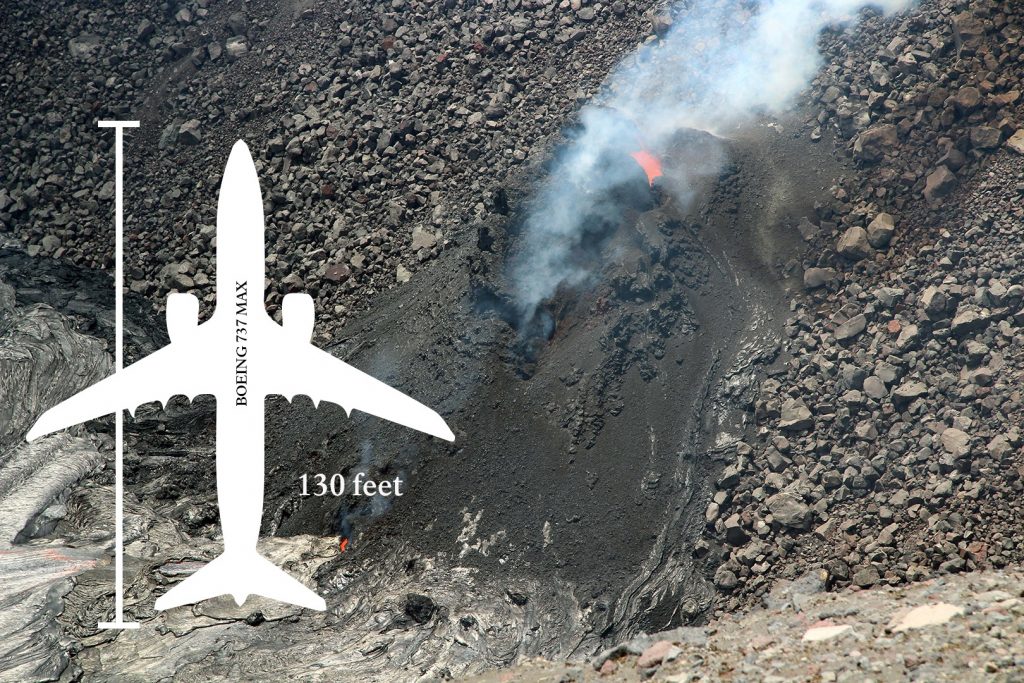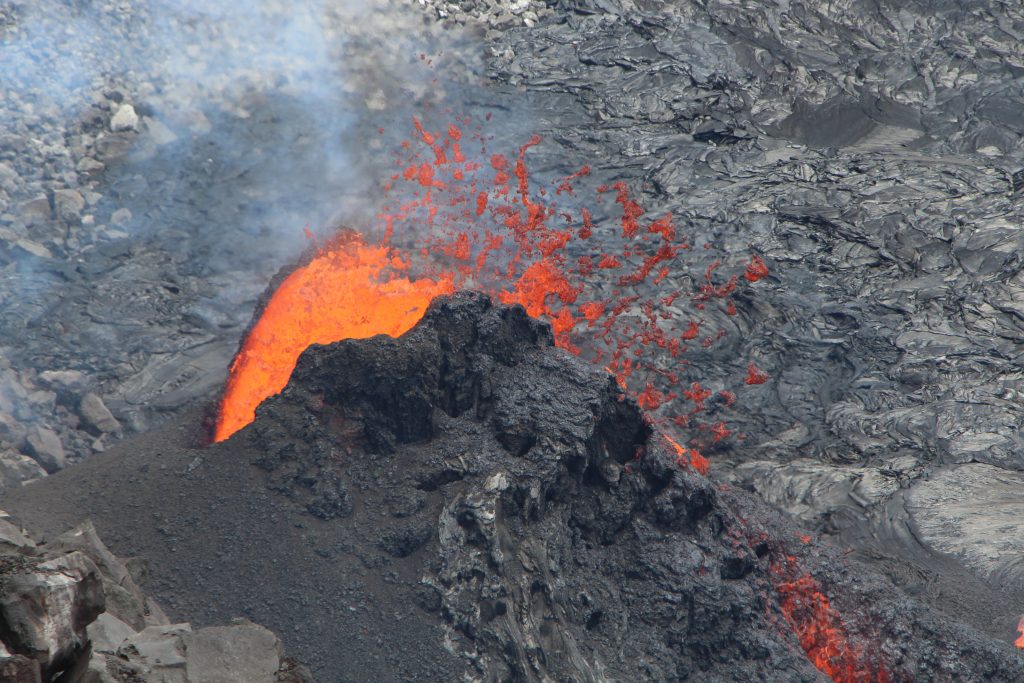Summit eruption of Kīlauea volcano on Big Island continues; most activity focused at southwestern vent
“Pele sleeps and wakes. Lakes of water, lakes of fire. Stars watch her by night.”
That haiku, sent to Hawai‘i Volcanoes National Park by Hawai‘i Pacific Parks Association communications specialist Judy Edwards, accompanies a photo posted June 13 on the park’s Facebook page of the Milky Way over an erupting Kaluapele, the caldera of Kīlauea volcano. The plume from the fiery pit of Pele seems to be touching the galaxy.

Kīlauea continues to erupt, with all activity confined to Halema‘uma‘u crater at the volcano’s summit. The eruption began just before 5 a.m. June 7.
Most of the activity seems to be focused at an eruptive vent on the southwest side of Halema‘uma‘u, which has exhibited renewed lava fountaining since June 16 as it continues to pump lava into a lake in the far southwest portion of the crater. According to the Hawaiian Volcano Observatory’s daily update from just before 8 a.m. Saturday, the fountain has been vigorous.
A crew of geologists from the observatory estimated at midday June 16 that lava was consistently jetting to at least 33 feet, with some spatter thrown even higher and farther away.
“Ever wonder how much that vent on the southwest crater wall has changed?” the national park asked in a June 14 Facebook post.
Observatory geologists asking the same question took a look June 12 and found that the spatter cone now stands at 130 feet high and is precariously covering the crater wall that collapsed during the 2018 eruption.
“To put things into perspective, this spatter cone is as big as a modern narrow-body jet airliner!” the park’s post said. “It’s quite a sight to behold.”

Deposits from the fountain at the southwest vent have widened and heightened the spatter cone, which now sits atop the original eruptive vent in the lower section of the crater wall, the daily volcano update said. Multiple streams of lava from the cone’s base have been feeding the southwestern lava lake and onto the southwestern-most block from the 2018 collapse.
The surface of the southwestern lava lake continues to circulate and slowly rise — along with the rest of the crater floor, which is uplifting because of lava accumulation below the solidified crust. Meanwhile, circulation of lava in the central basin has been slowing and the lava level within has been falling relative to the surrounding crust.
Several overflows from the southwestern lava lake have even cascaded into the central basin during recent days.
No active lava has been observed in the northern or eastern portions of the crater during the past day. Seismic activity at the summit is being dominated by eruptive tremor, a signal resulting from fluid movement and commonly associated with an eruption. Volcanic gas emissions in the area also remain elevated.
No unusual activity has been observed along the volcano’s East or Southwest Rift Zones.
The Hawaiian Volcano Observatory continues to closely monitor Kīlauea. Updates are issued daily, with additional messages issued as needed. For more information, click here. You also can get a Kīlauea activity summary via phone by calling 808-967-8862.
For Hawai‘i Volcanoes National Park visitor information, click here.























